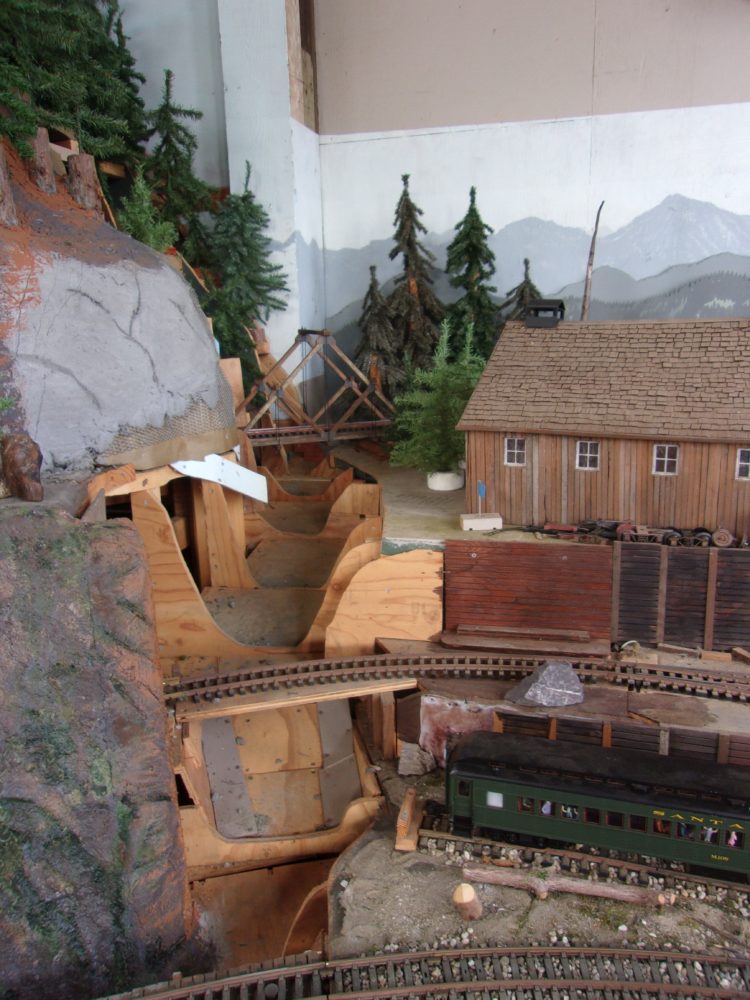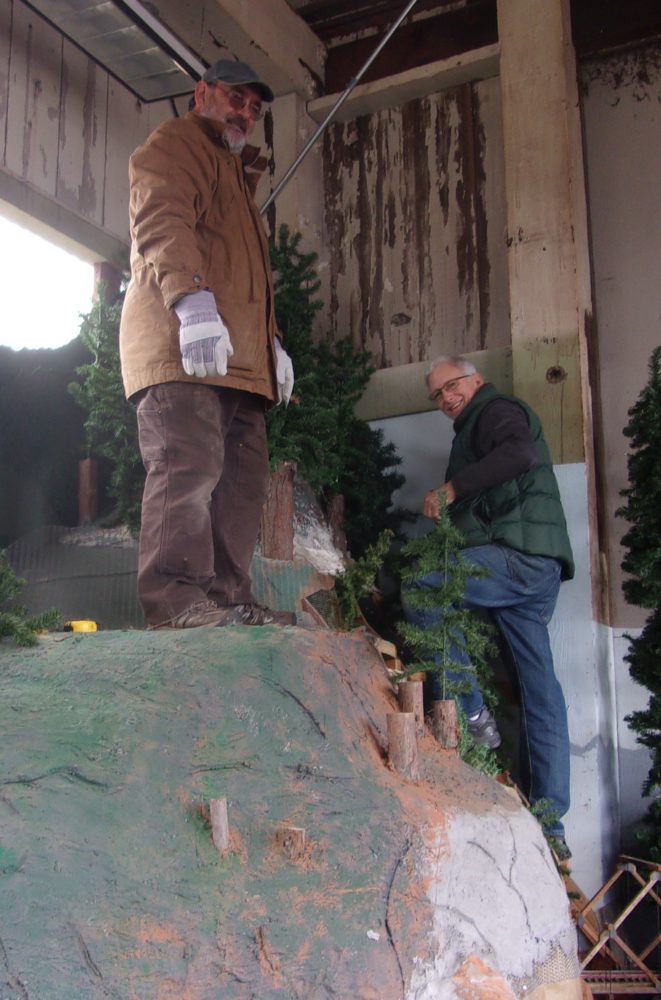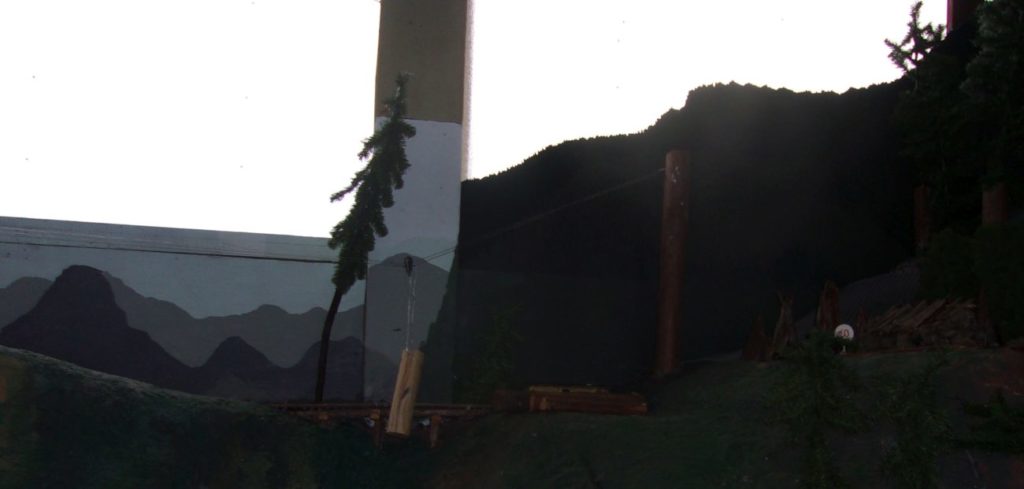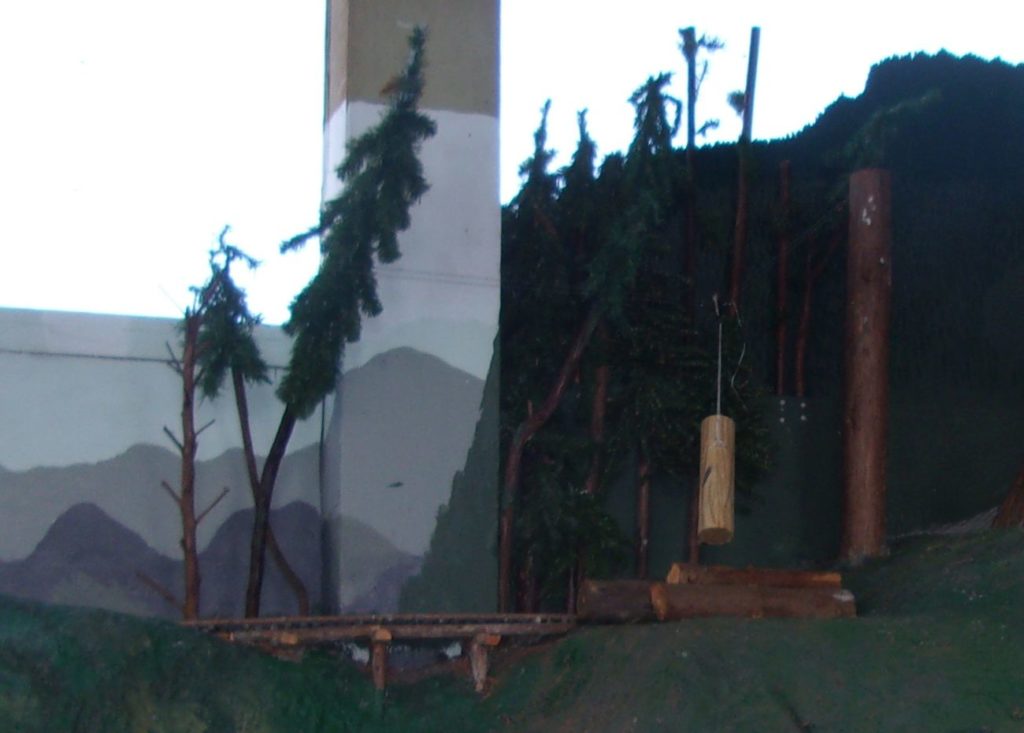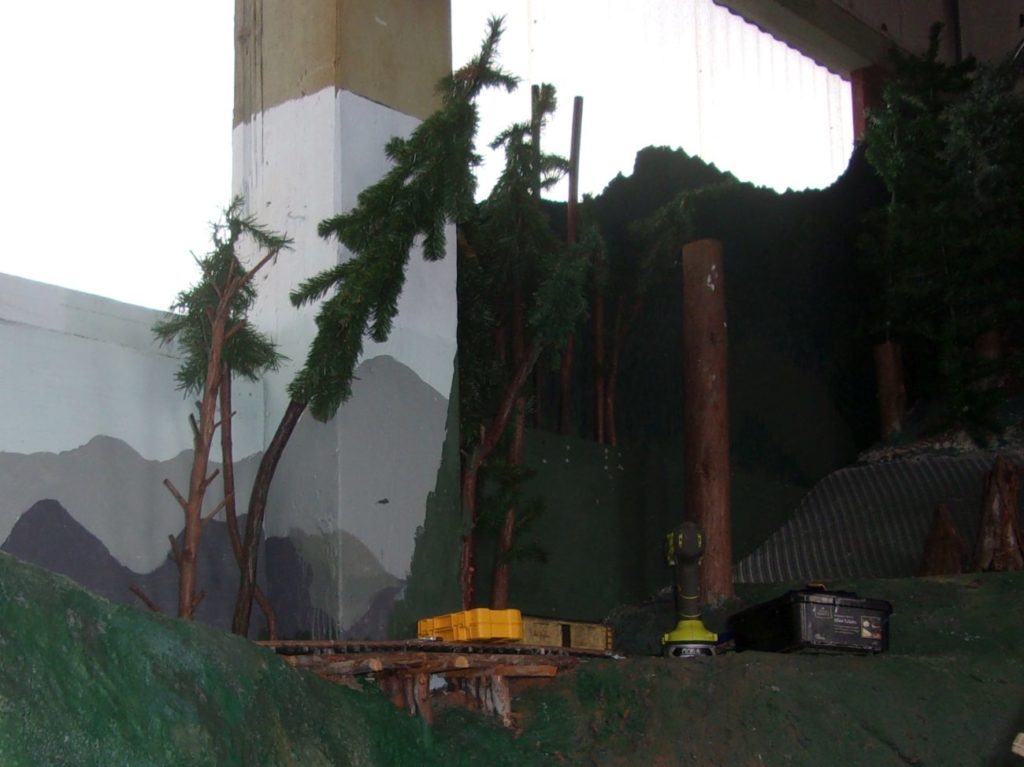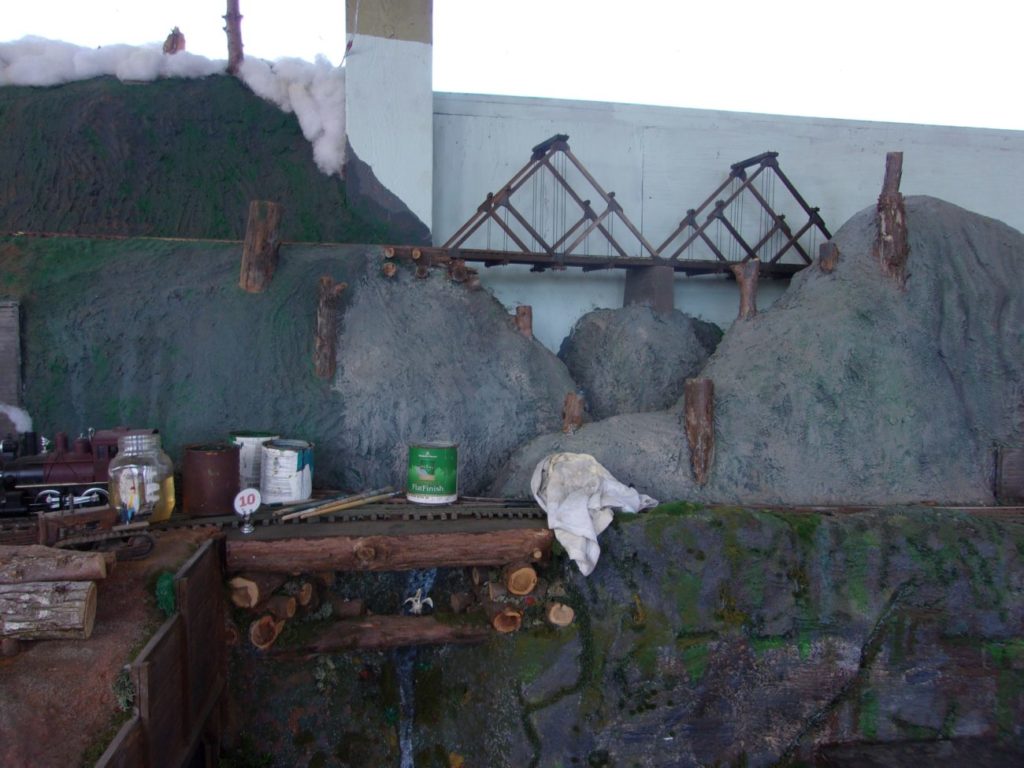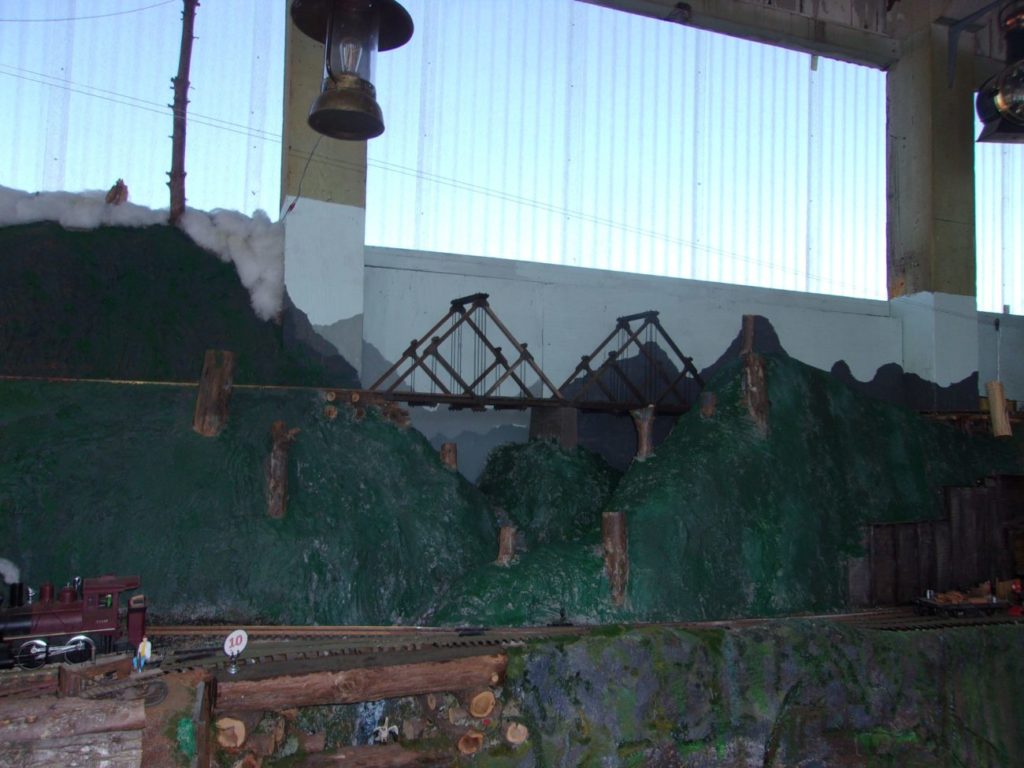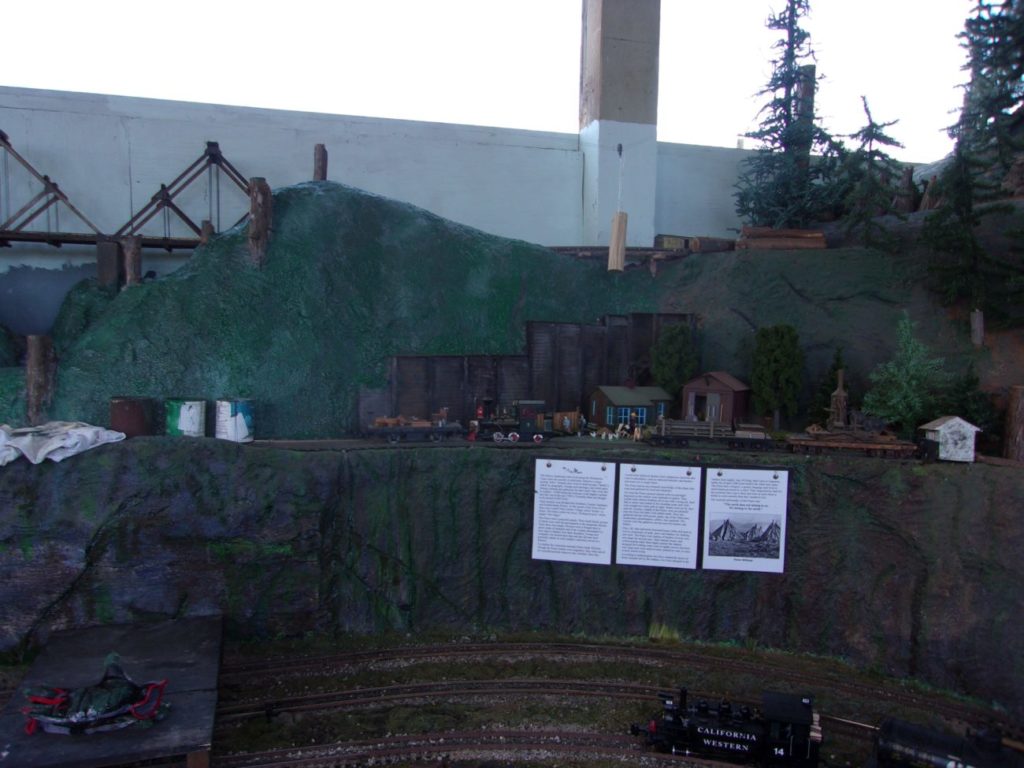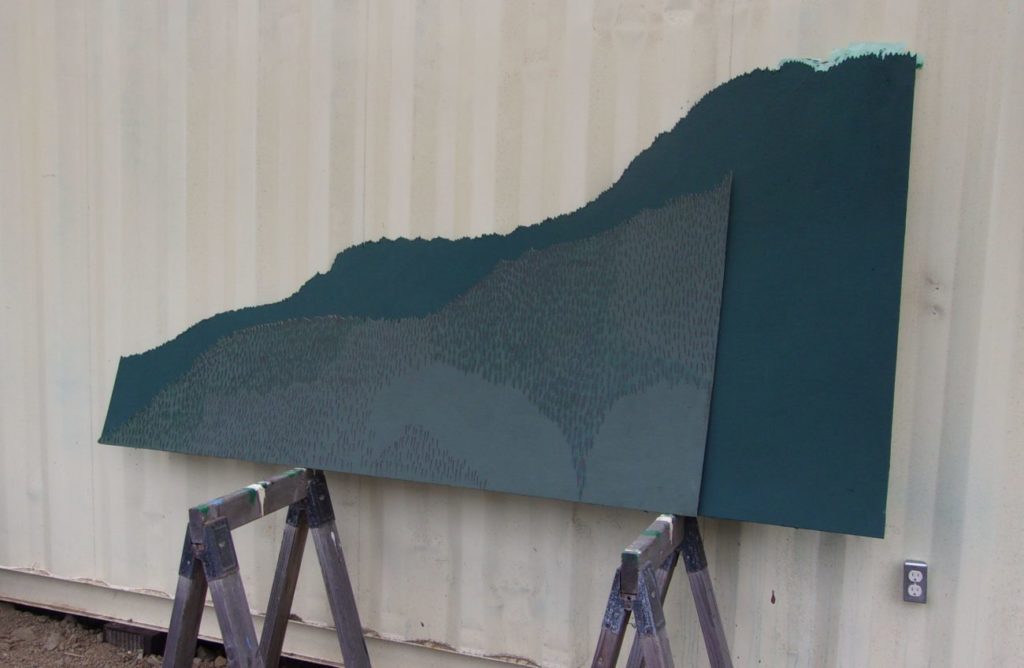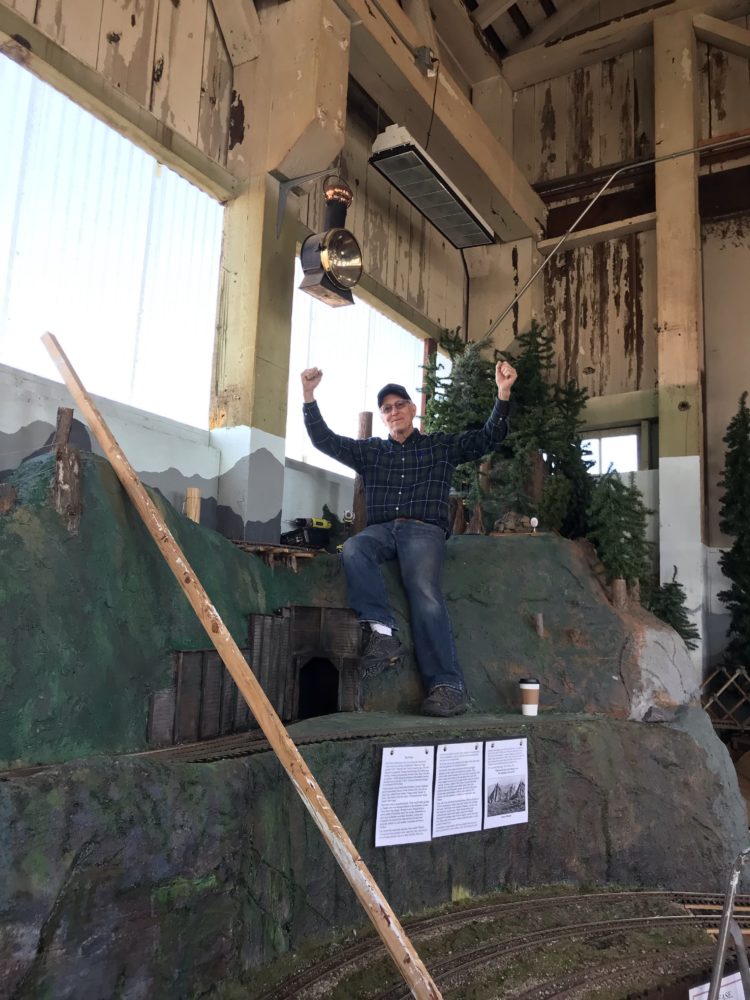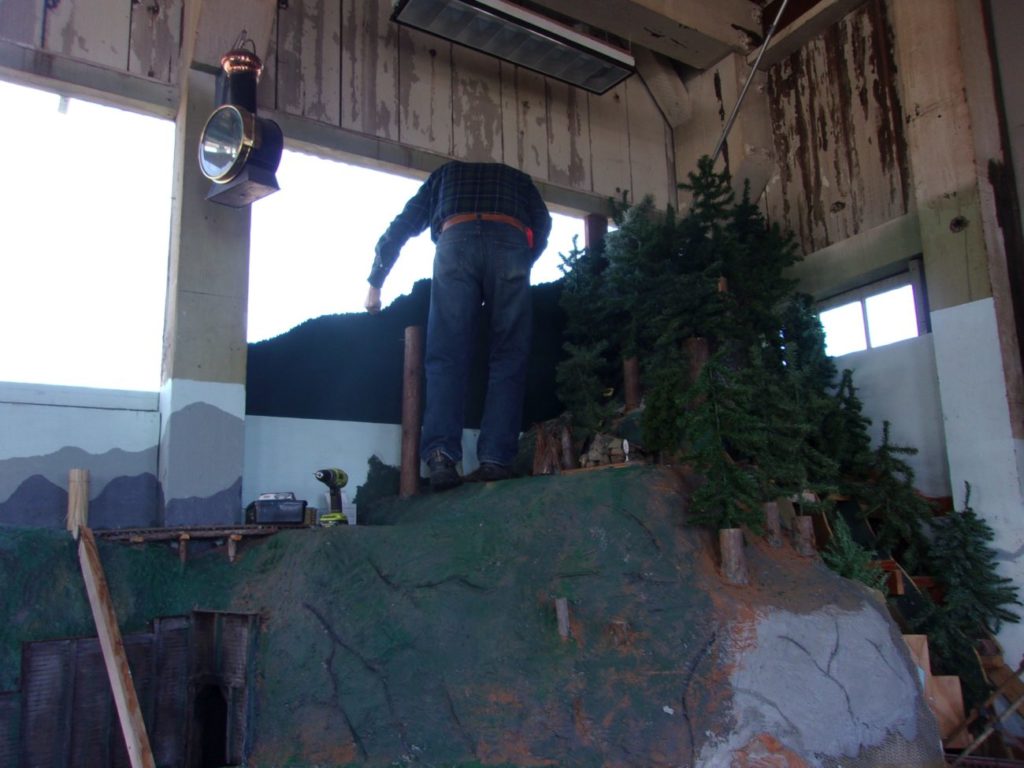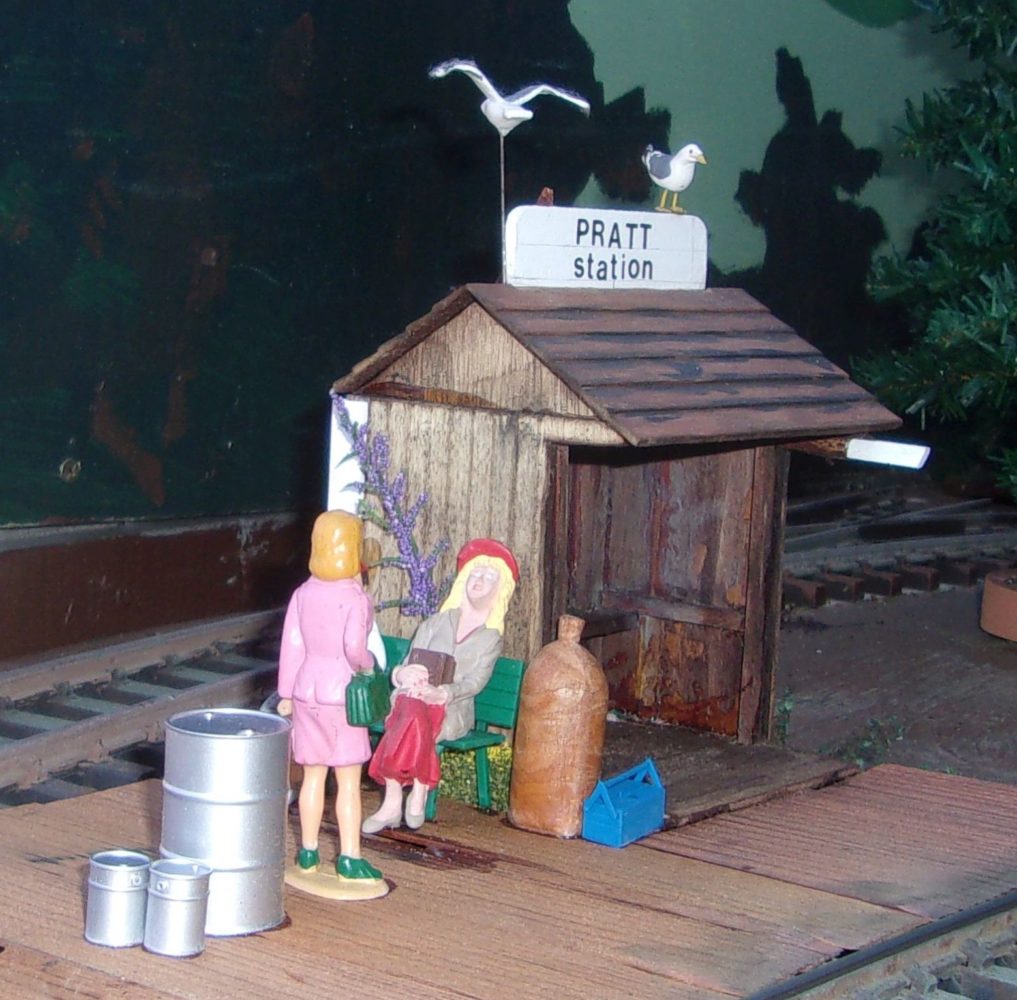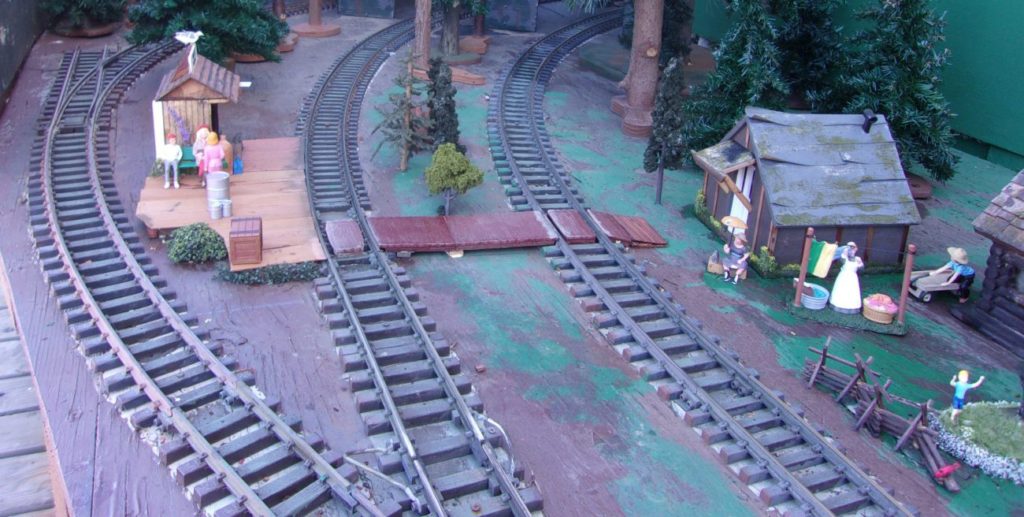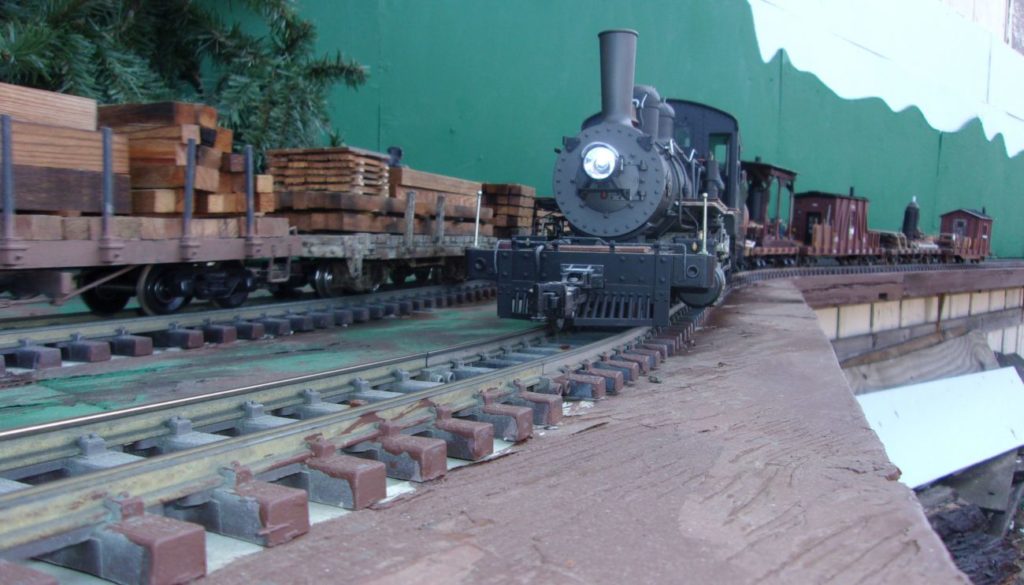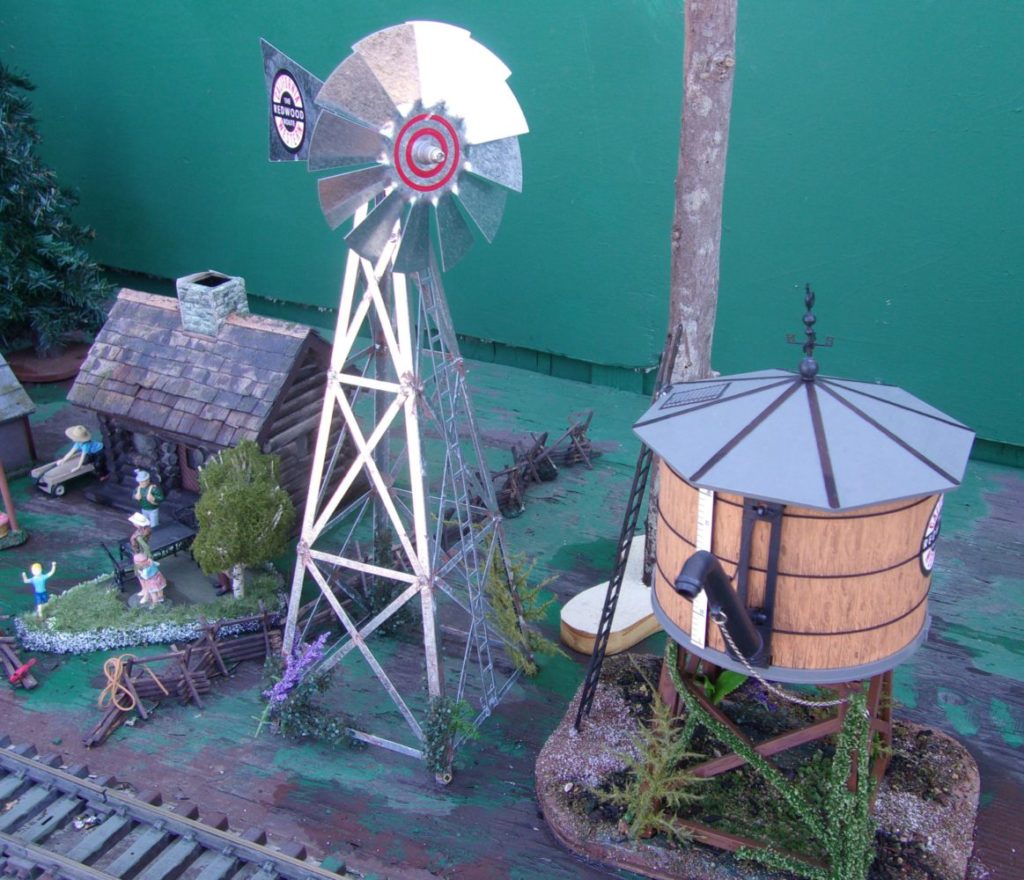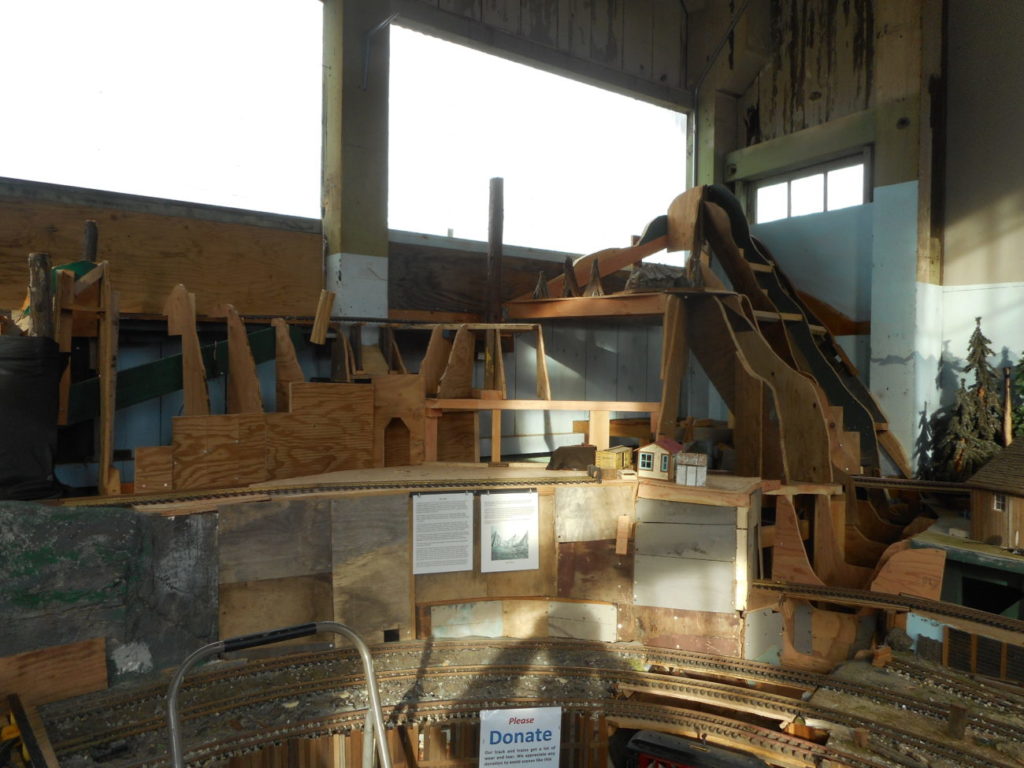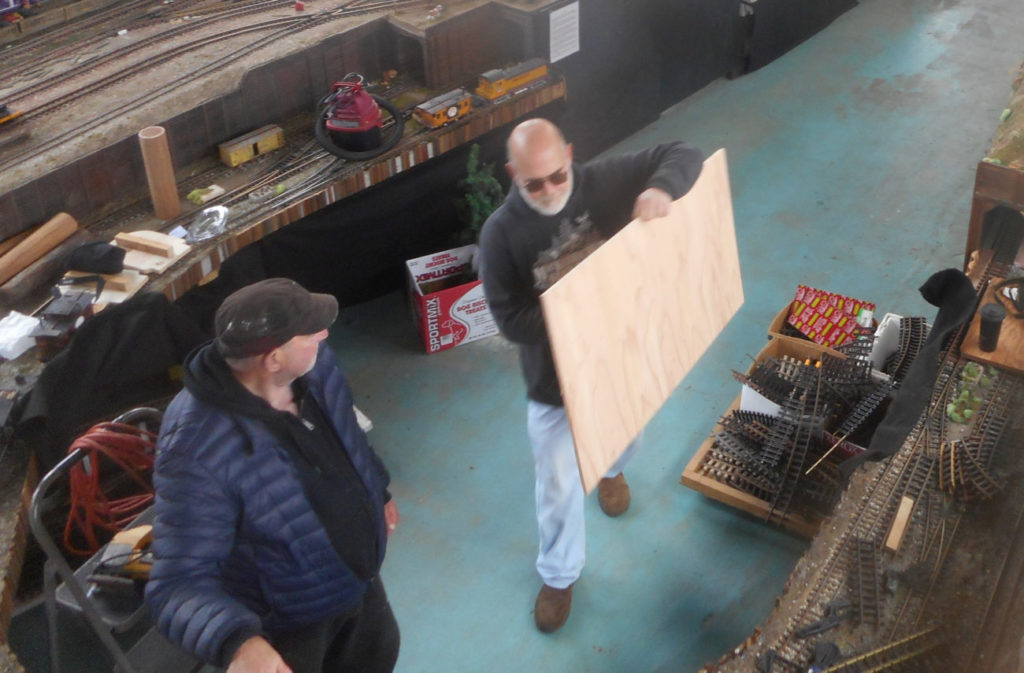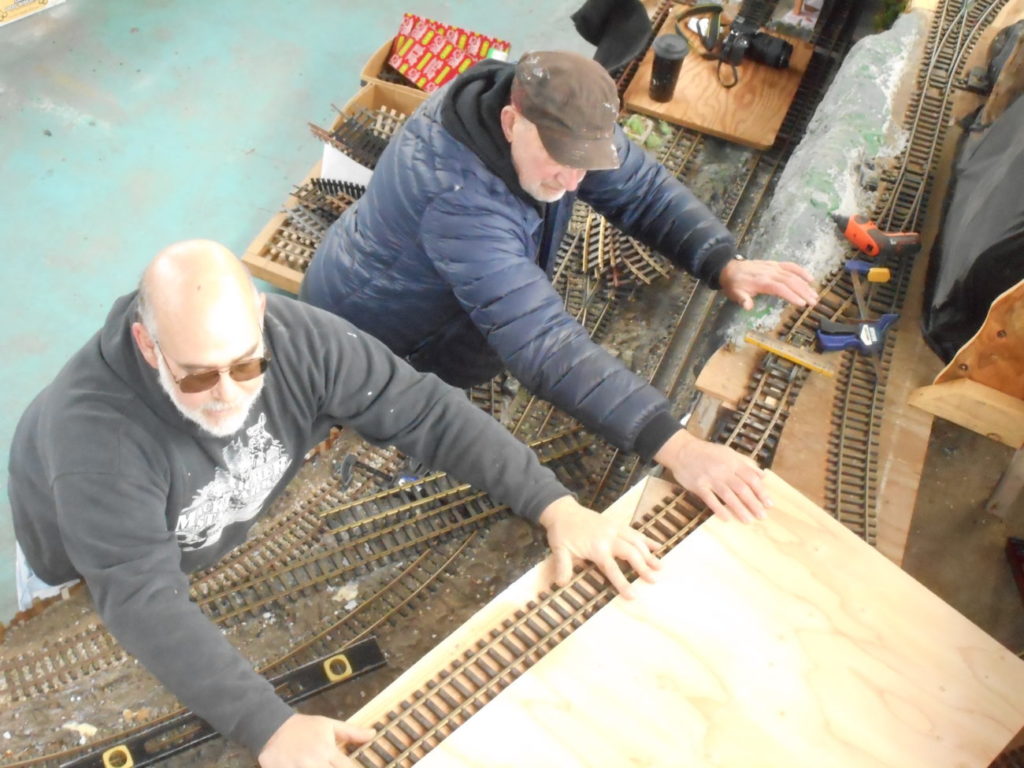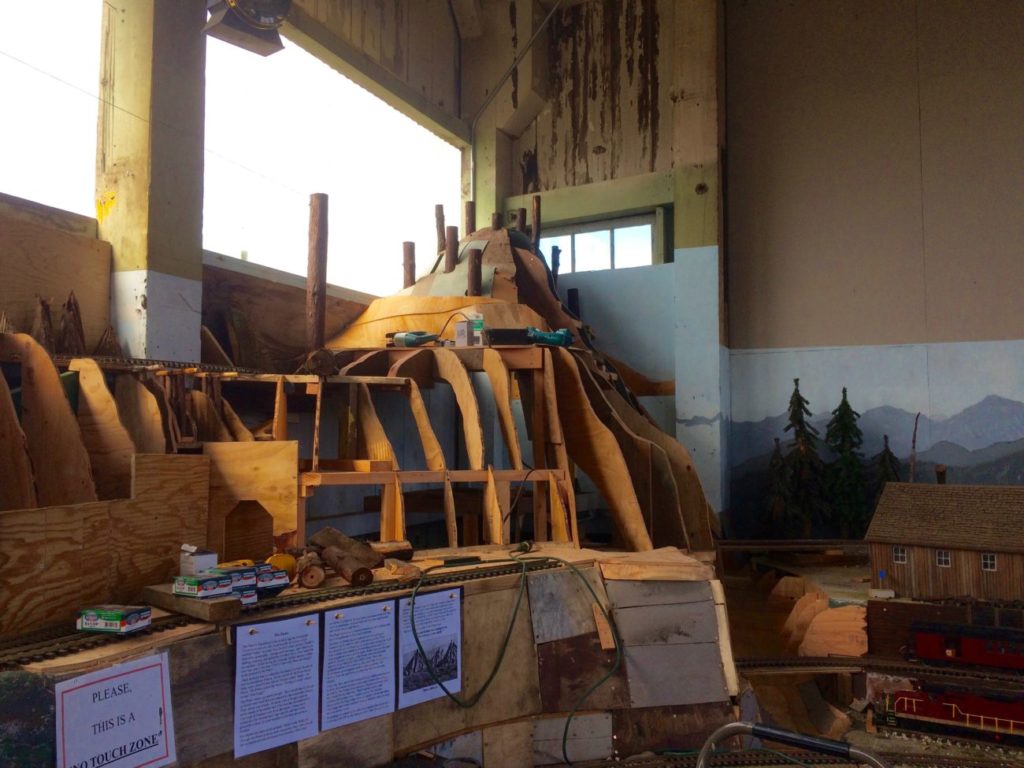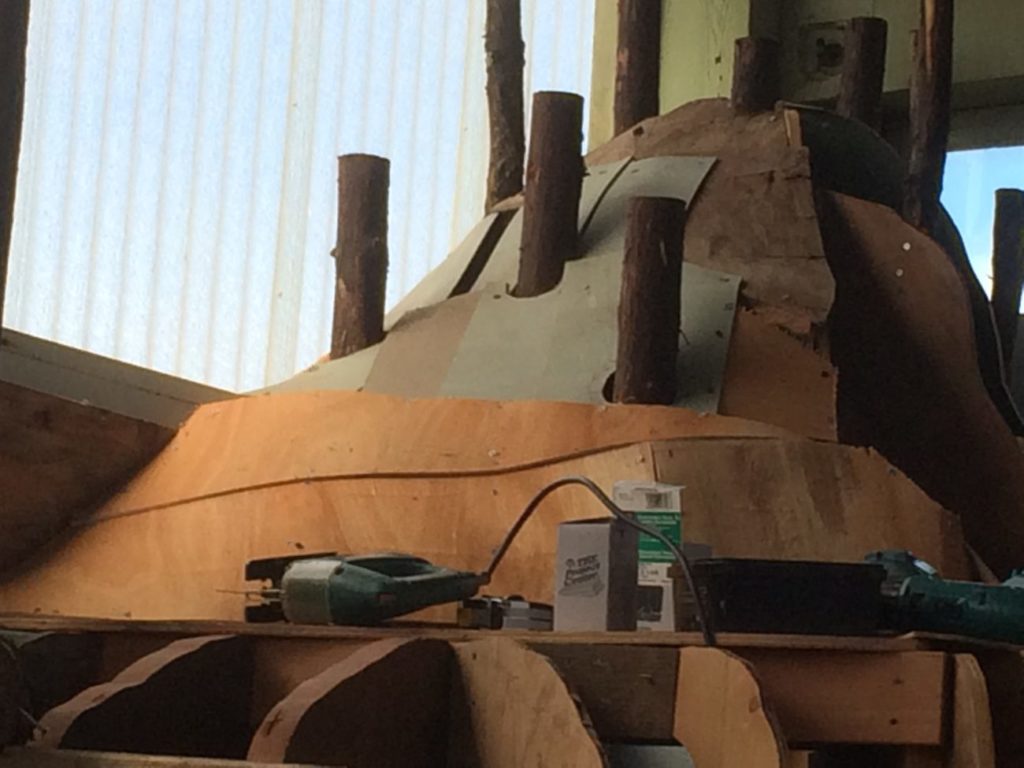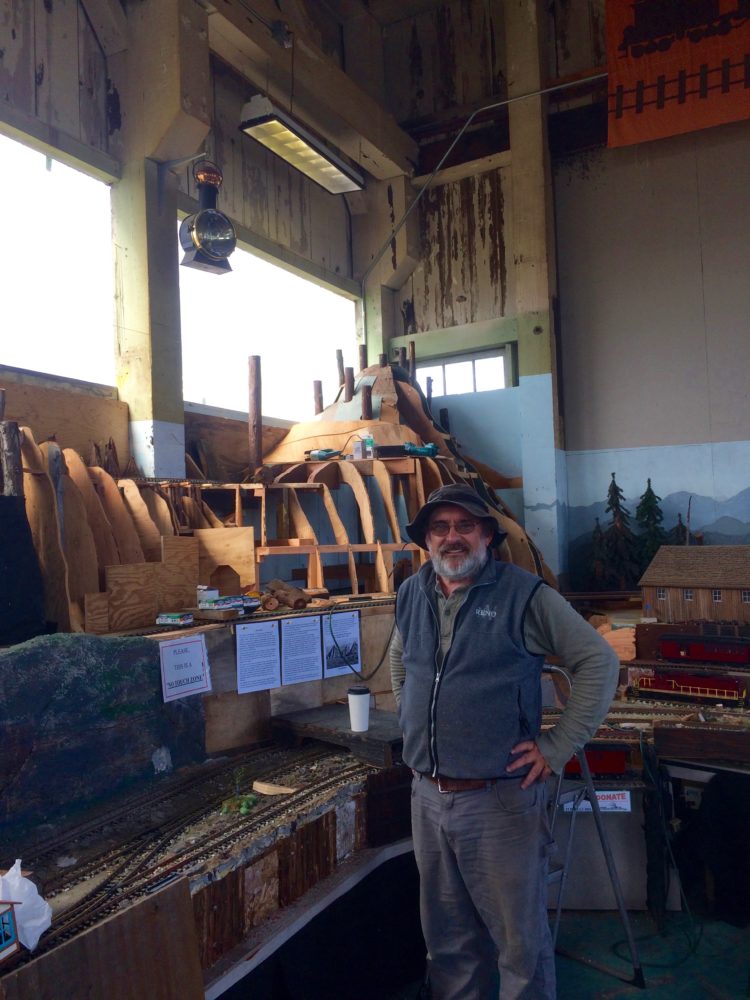Most of the A-Frame bridges along the Redwood Coast were on the California Western’s (CWR) Skunk Line. There was one across Little River and there is one today outside Roots of Motive Power in Willits (although we are not sure why or what it does).
Once there were 115 bridges on the 34 mile-long California Western’s Skunk Line from Fort Bragg to Willits. Only 30 remain today – and they all have been “modernized”. Of the 115 original bridges it is believed that 37 of them were A-Frame type. Most of the 37 were built from the 1890’s to 1911 to cross the rivers on the route. The redwood timber for construction of the A-Frame bridge was abundant and handy. The design distributes the weight of the bridge onto supports/pilings at the side of the river. No supports were driven directly into the river below since they could be ripped out by the surging water and debris (including uprooted trees) caused by heavy rains.
Alas, these wooden bridges became prime targets for arsonists and that, apart from straightening the line, accounts for their replacement.
Club member Santa Cruz Frank Smith is a dab hand at bridge construction. These pics show one of his beauties installed on soon to be River Noyo.
Santa Ceuz Franks A-Frame Bridge

